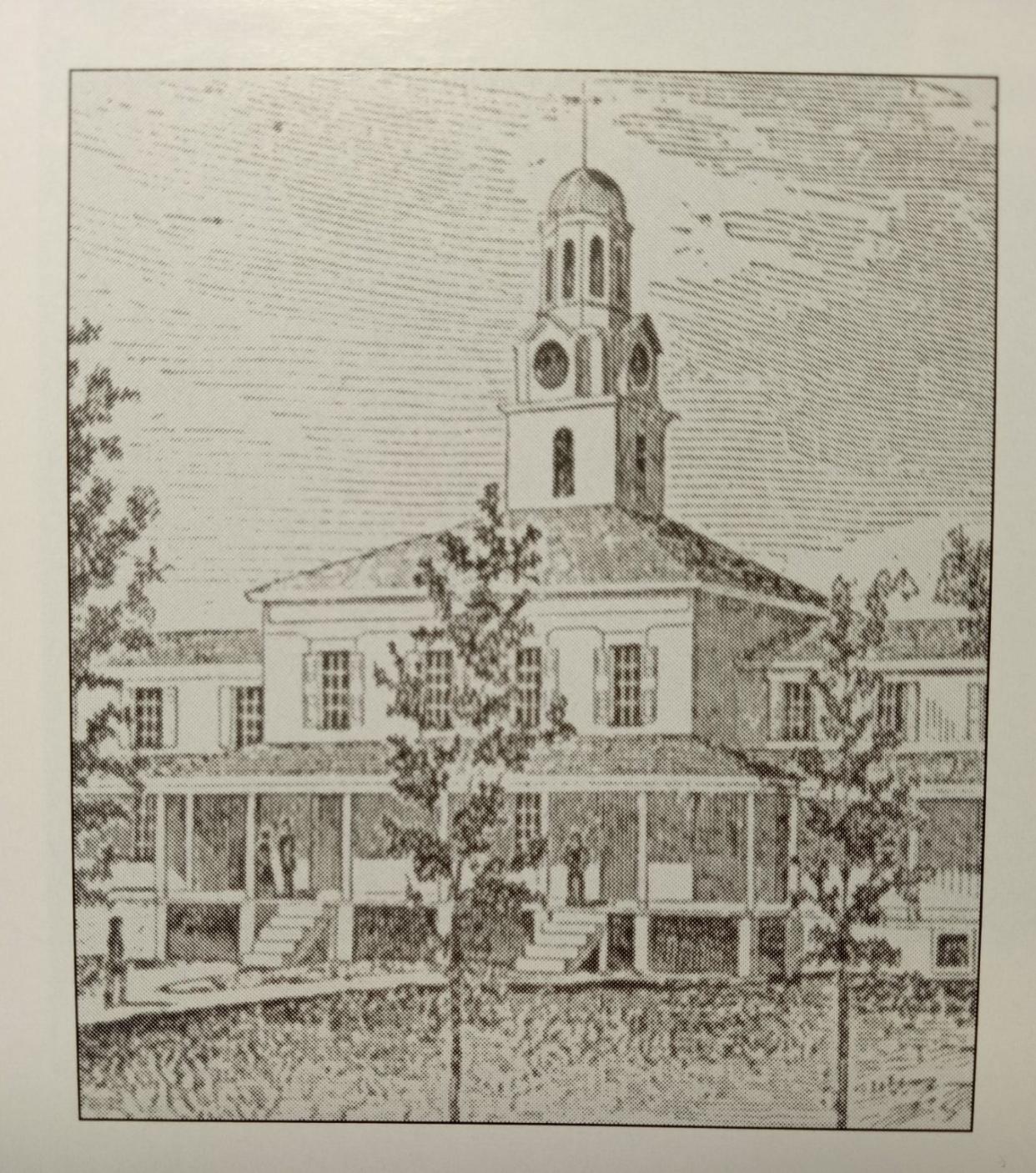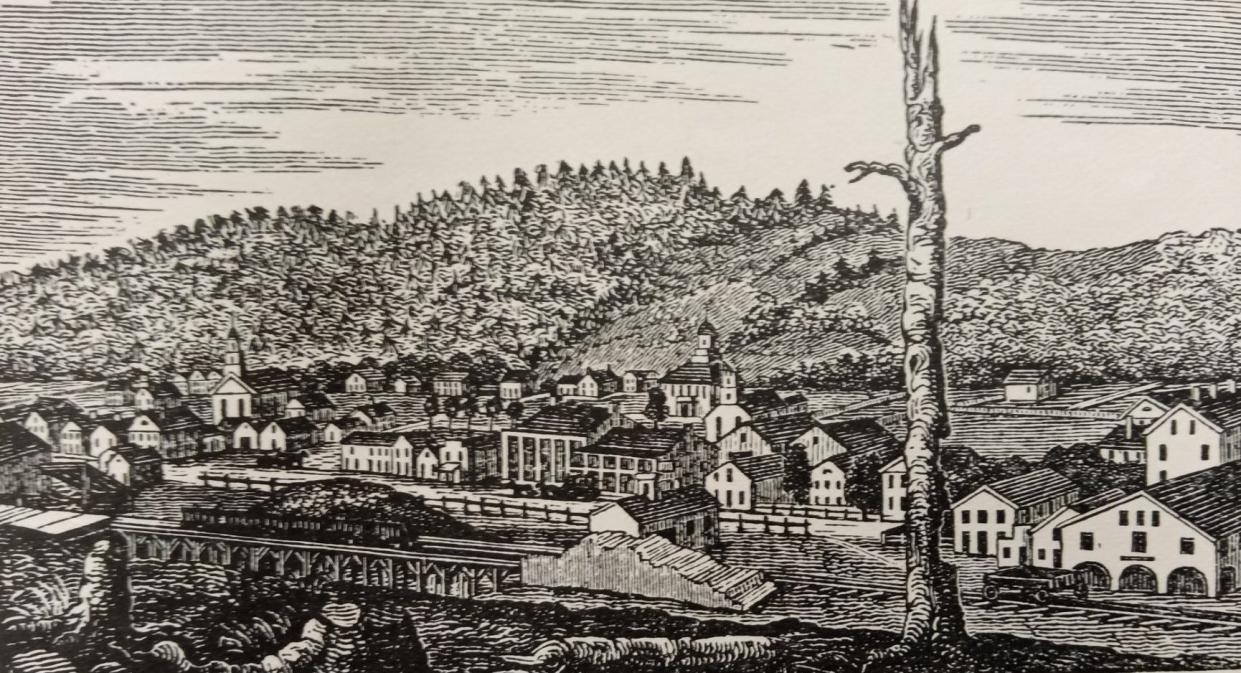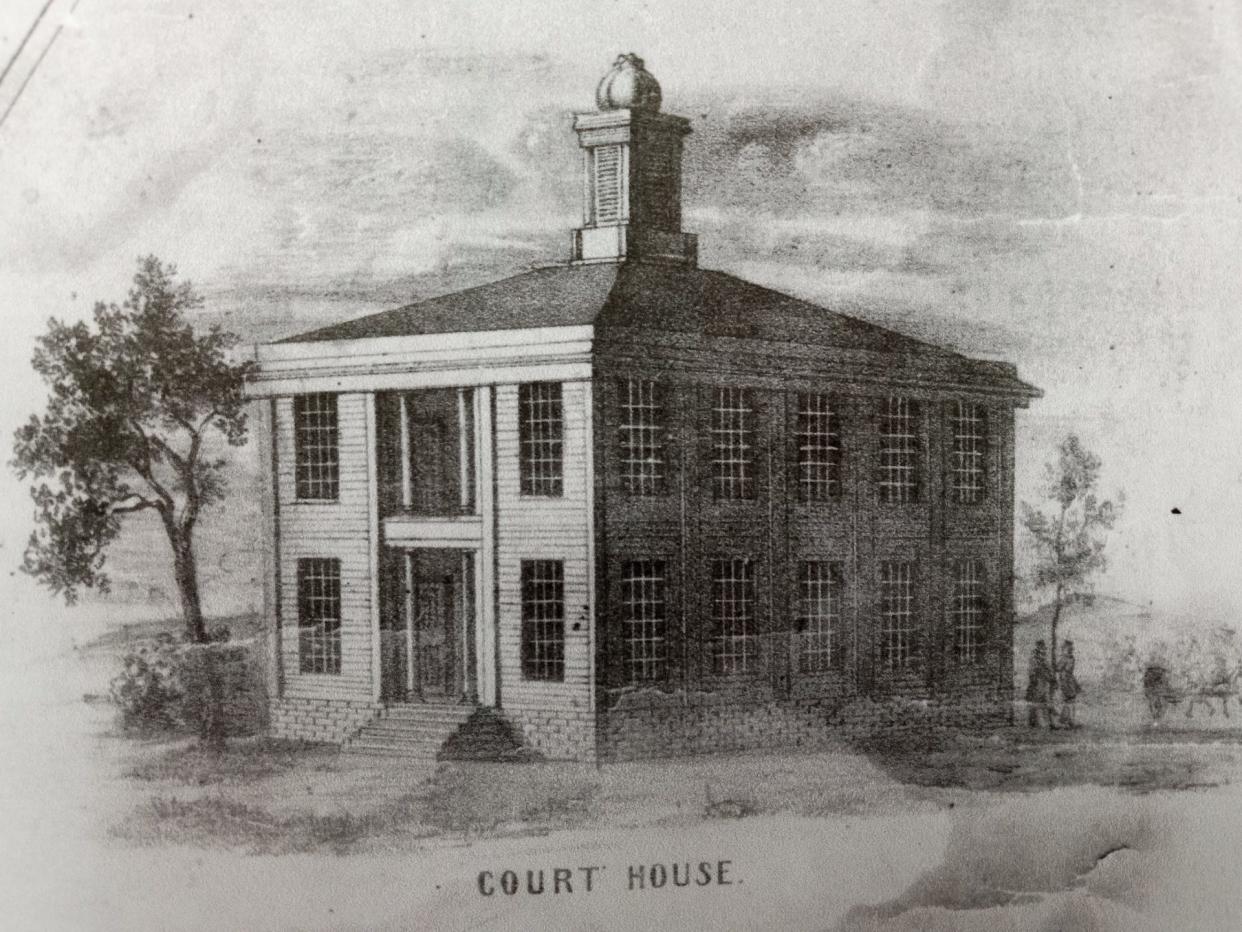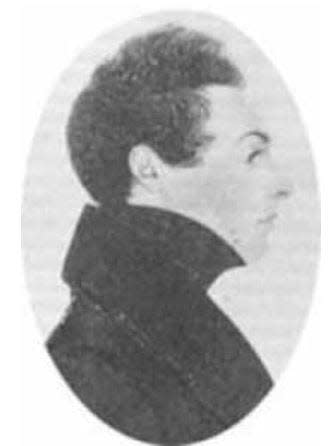Local history: Honesdale's first courthouse built after county seat moved from Bethany
This is the first installment in a three-part series on the history of Wayne County's courthouses.
Honesdale, the county seat of Wayne County, Pennsylvania, boasts a fine, red brick courthouse, opposite Central Park. It was not the first courthouse there. In the 1840s-1870s, there was a large wooden courthouse with a tall belfry.
This early courthouse arrived and went in storms of controversy, the first over the removal of the county seat to Honesdale, and the second over the need for what some saw as an extravagant waste of money.
Established in 1778, Wayne County included all of today’s Wayne and Pike counties, and a bit of Monroe. Milford became the first county seat. This proved too far from the northern reaches. Briefly, the court was in Wilsonville, what is now the north end of Lake Wallenpaupack near Hawley, until relocating to Bethany in 1800.
Honesdale didn't yet exist; the mostly unsettled valley below the cliff where the Lackawaxen River meets Dyberry Creek was called Dyberry Forks. Bethany sits on a hill three miles north.
Court functions began in 1804. A brick courthouse was erected but was too small; it was later moved across the street and became a store.

A much larger, Federal-style, wooden courthouse was opened in 1817 on Bethany’s square. County officials, however, needed to better protect records, and in 1823 a brick structure was built in the back.
A drawing of the two-story courthouse shows a large middle section with a high belfry, and two wings. There was a wrap-around porch facing the street, reached by two staircases. There was a wide front yard dotted with trees and a fence lining the road.
Bethany loses county seat
The legislature crafted Pike County from Wayne in 1814, keeping Bethany the Wayne County seat. All seemed settled until the Delaware & Hudson (D&H) Canal Company arrived in the mid-1820s to start its canal at Dyberry Forks, renaming it Honesdale for the company's first president, Philip Hone. The town grew rapidly, eclipsing Bethany in importance.

The decision in 1841 to make Honesdale the county seat stirred great controversy in Bethany. Petitions were taken to Harrisburg, where a plot was advanced in the legislative session of 1840-1841. Sen. Ebenezer Kingsbury of Honesdale championed relocating the county seat. Detractors saw this as a devious trick and unsuccessfully pushed hard to prevent the governor from signing the bill.
On May 4, 1841, the county commissioners met the governor’s officials and fixed the location of the new courthouse on Third Street (Court Street), facing the public square (Central Park). Kingsbury lived at what is now 914 Church St., directly opposite the future courthouse.
Courthouse built
Charles Jameson of Honesdale built the courthouse in 1843 for $11,500 in two annual installments. He also received $510 from the sale of the county buildings at Bethany.
County records were transferred from Bethany on Aug. 21 before finishing the building. The structure was accepted on Nov. 8, and court was first held there in December.

County expenditures for 1843 included $4924.10 to Jameson for "new buildings at Honesdale" and $115.60 for "chairs for court room and offices." The commissioners at that time were Amory Prescott, Albert O. Hanford, Phineas Howe Jr. and Alra W. Norton.
The most complete description found of this long-gone landmark was from an anonymous letter writer in The Wayne Independent, Sept. 19, 1878 — the first year of this venerable publication. The writer lamented the recent decision to replace the courthouse, unlike others who said the courthouse was deficient.
"The old courthouse was a good one, good enough for many years to come. It stood upon a high and good foundation having a good and convenient basement for coal, wood, etc.; the body of the building was in good condition, siding and roof in perfect order, well painted outside, and large, white, granite steps leading to the main entrance from the street, large commodious rooms on the first floor for Grand and Petite Juries, Sheriff's office and large library room, being actually larger than was needed for the purpose, and surplus room rented to a lawyer and Justice of the Peace;
"The second story or audience room reached by a flight of stairs branching off right and left so as to enter the room by two doors, the audience and court room large and furnished with conveniently arranged seats well painted and varnished, the jury box well furnished with tables and seats; a substantial and at the same time ornamental railing surrounding that space allotted to the bar, the witness box and judge’s bench contiguous to each other, a room for female witnesses and a room specially set apart and furnished for members of the bar, the floors of court room and aisles durably matted, windows adjusted on pulleys so that could be raised or lowered at pleasure, a large central ventilator in the wall overhead,
"The whole surmounted by a well-proportioned cupola in which was a bell that could be heard at a distance of three miles, seems to have been all that was necessary for a courthouse for at least ten years to come."
Gansevoort Melville
Tuesday morning, July 9, 1844, approximately 800 people gathered at the courthouse to hear the gifted, young, Democratic orator Gansevoort Melville. The Wayne County Herald reported that women attended, believed to be the first time in Wayne County women participated in a political meeting. With only 12 hours' notice, the Herald printed handbills and distributed them.
Melville, brother to the author Herman Melville of "Moby Dick" fame, was secretary to the American Legation at the Court of St. James in London. He lauded the service of former President Martin van Buren, discussed the political divide between the Democrats and Whigs, and loudly defended the re-annexation of Texas from Mexico and the keeping the Oregon territory from the British. His rally incited long, thunderous cheers.

The old courthouse was the setting for many political rallies and meetings of Wayne County Democrats and joint meetings with county’s Whig committee. In January 1844, there was a huge meeting of the Democrats in the courthouse to show their support for President Martin van Buren, whose 1840 election defeat was described as a "national calamity." He was a candidate for nomination in 1844 but lost to James Polk.
The Herald reported that the Wayne County Temperance convention was held "at early candlelight" Wednesday evening, Jan. 27, 1847.
A mass meeting was held at the courthouse in March 1847 to collect money for the poor in Ireland. The generous sum of $547 was raised.
Judge's bench
Honesdale's newspapers carried biting articles about the conduct of county judges. An account in the Herald, Nov. 6, 1856, blasted Associate Judge Frances Penniman for agreeing to hold court Nov. 3 to consider the application of citizenship of 200 foreigners who had paid for naturalization papers, and then failing to show.
It should be noted that Penniman was also editor of the Herald's competitor, the Honesdale Democrat. The judge's side of the story was not found while researching this matter.
Many applicants traveled 20 to 30 miles to appear in court and waited all day, only to be disappointed. "He has trampled upon the rights of 200 applicants for citizen papers - he has subjected them and about 300 witnesses to the trouble and expense of coming to Honesdale, and then left town to defeat the object of their journey," the Herald wrote. Judge Barrett could not attend, and Judge Mumford could not hold court alone, the editor said.
Back then, anyone coming from out of town to court could face long rides by horse if not on foot, and lodged in a hotel.
In August 1858, foreign residents had another opportunity, and this time W. Wefferling and John Kelley offered to pay their expenses to file for naturalization again at the prothonotary's office.

President judges who served in this courthouse (1843-1877) were William Jessup, Nathaniel Eldred, George Barrett, James N. Potter, Thomas Bell, Samuel Dreher and Charles Waller. There were also numerous associate judges.
County fair in backyard
The courthouse, being closer to the street and smaller than the present rendition, offered a spacious backyard where there were a series of county fairs, a traveling circus and even a hanging.
Prior to the current, successful Wayne County Fair which started in 1862, the "Wayne County Agricultural and Mechanic Arts Society" hosted annual fairs in October 1848 to 1855 behind and inside the courthouse.
In 1850 the old Bethany courthouse became the University of Northern Pennsylvania and started well. Tragically, the landmark — made of wood — burned down in 1857. The brick, former county office building in the back remains to this day, home to the Bethany Public Library and borough council meetings.
Coming in part two
Concerns developed over the adequacy of Honesdale’s wooden courthouse, regarding its size and its flammability.
Peter Becker has worked at the Tri-County Independent or its predecessor publications since 1994. Reach him at pbecker@tricountyindependent.com or 570-253-3055 ext. 1588.
This article originally appeared on Tri-County Independent: Honesdale got first courthouse after county seat moved from Bethany
